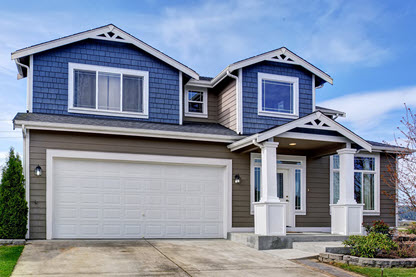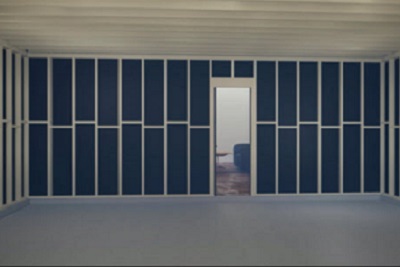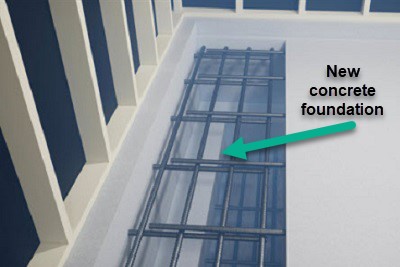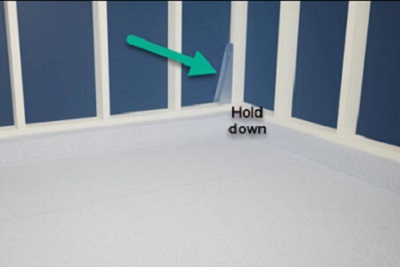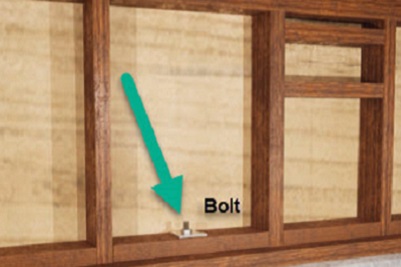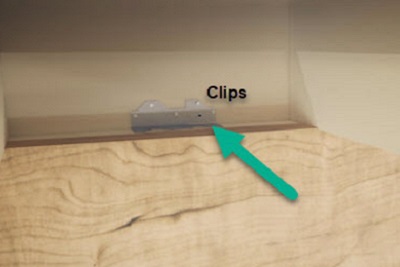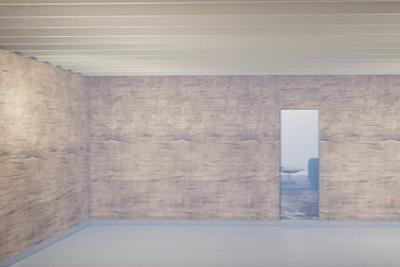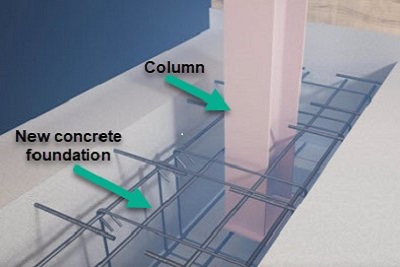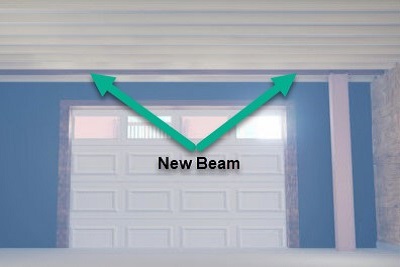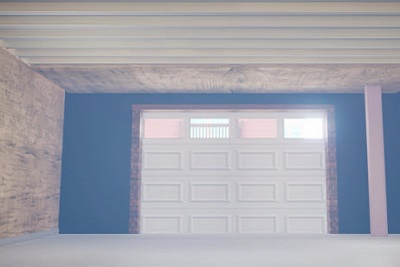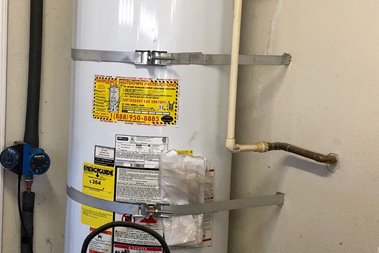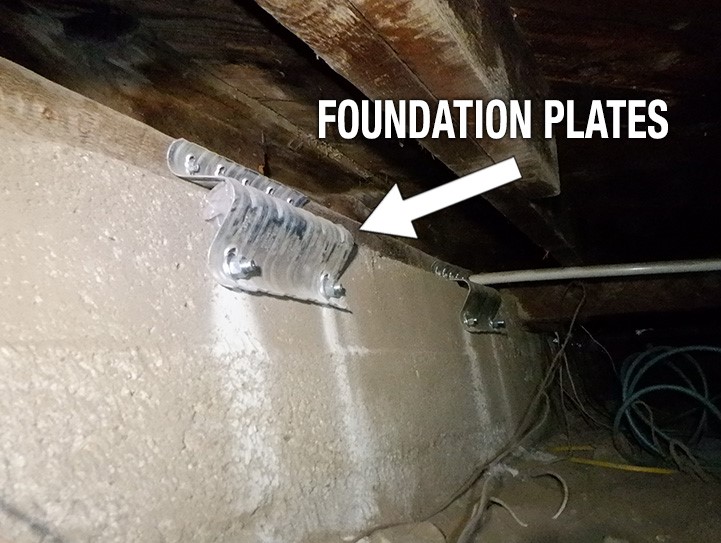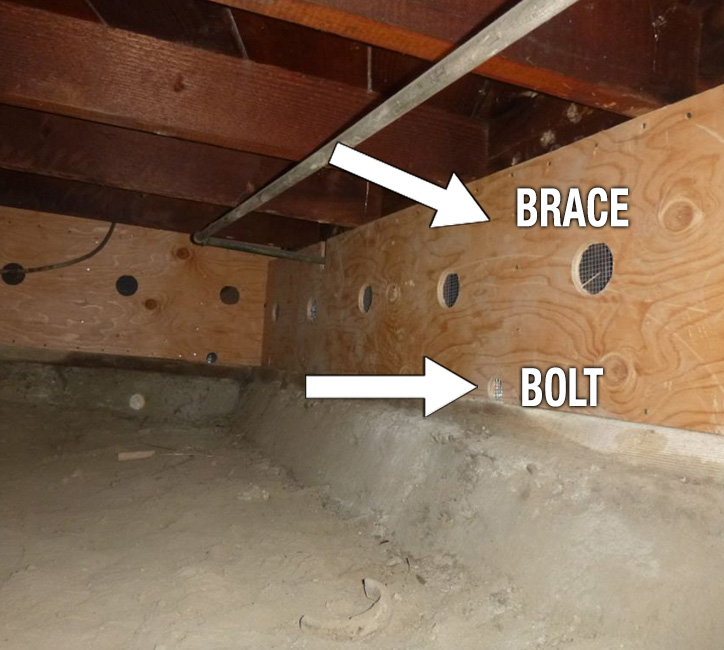An Earthquake Soft-Story (ESS) earthquake retrofit strengthens older houses (pre-2000) that have a living space above the garage, also called a "soft story." This makes these houses more resistant to earthquake damage caused by ground shaking.
An ESS earthquake retrofit:
- Strengthens the walls at the garage door or any other large openings with plywood or other strengthening elements including steel columns or proprietary shear elements;
- Braces the perimeter walls of the lowest story and, if there is a crawl space, the cripple walls. Cripple walls are short (7 feet or less) walls between the wooden frame of the house and the foundation.
- Bolts the house to its foundation.
The Soft-Story Earthquake Retrofit Work
The following are the typical steps of an earthquake soft-story retrofit.
See if Your Home Qualifies for an ESS Retrofit
| Strengthening Your Garage Space | |
|---|---|
|
The living-space-over-garage vulnerability is caused by the large open space and garage door opening. Walls are the structural elements that resist earthquake forces. An ESS retrofit can improve the expected earthquake performance of these kinds of homes by strengthening the foundation, walls, and adding additional structural supports. An ESS retrofit must be done with a building permit and in conformance with FEMA P-1100. |
|
|
The floor along the narrow back wall of the garage may require a new foundation with reinforcing bars. |
|
|
It also may require hold downs at each end of the back wall of the garage. |
|
|
Typically, the back and side walls of the garage will require new anchor bolts, which bolt the house to the foundation. |
|
|
That is followed by adding clips between the top plate of the back and side walls of the garage, and the floor joists. |
|
|
Plywood is then nailed to the back and side walls of the garage creating shear walls. This increases the strength of the wall, ensuring the wall remains rigid during earthquake shaking. |
|
|
At the front wall of the garage (where the garage door opening is), there typically isn’t enough room to install sufficient plywood to create shear walls. The front garage wall will require a new concrete foundation. Then, either a new steel column or proprietary shear wall will be installed. A proprietary shear wall is a pre-engineered, pre-fabricated wood or steel wall assembly designed to act as a shear wall, resisting earthquake forces and movement, when the existing walls either side of the garage door are too narrow to act as shear walls. |
|
|
A new beam will be installed up in the garage ceiling, in line with the new steel column, to act as a “collector” beam. The collector beam ties the second floor framing together, collecting earthquake forces and dragging them into the new steel column or proprietary shear wall. |
|
|
Typically, plywood will be installed to cover the new beam, and the top of the column. |
|
Strapping the Water HeaterLocal building codes and CRMP require that the water heater be properly strapped and braced as part of your retrofit. During past earthquakes, water heaters have moved or tipped over if they were not securely anchored to adjacent walls or floors. This movement has resulted in gas line or water line leaks, and electrical wiring damage, which can cause significant and costly property damage.
|
|
Seismic Retrofit Work For Your Existing Crawl Space (If You Have One)
Most earthquake damage occurs when unsecured buildings slide off of their foundation. If your house has a crawl space in addition to the living space over your garage, and that crawl space has not already been retrofitted in accordance with California Existing Building Code (CEBC) Chapter A3 or FEMA P-1100, the crawl space will need to be retrofitted in addition to the garage space. The crawl space will need either a "bolt only," or "brace and bolt" retrofit—it all depends on what's under your house.
| Strengthening Your Crawl Space | |
|---|---|
Bolt-Only Crawl Space RetrofitIf the wood frame of the house sits directly on the foundation (known as a "stem wall") in the crawl space under the house, this house would need a "bolt-only" retrofit, where the foundation is bolted to the wood frame of the house.
|
|
Brace and Bolt Crawl Space RetrofitIf there are short (7 feet or less) walls between the wooden frame of the house and the foundation (known as "cripple walls") in the crawl space under the house, the house will need a "brace and bolt" retrofit.
|
|
Who Can I Hire to Complete the Retrofit? Can I Do it Myself?
For the ESS Program you must hire a contractor to do the retrofit work, and you must choose one from the ESS Contractor Directory. Contractors in the Directory have successfully completed a FEMA seismic retrofit training course, and are California-licensed general contractors.
- what you should know before hiring a contractor (PDF)
- Learn more about the ESS Program Rules

